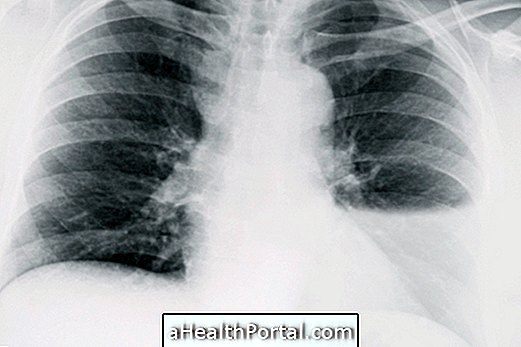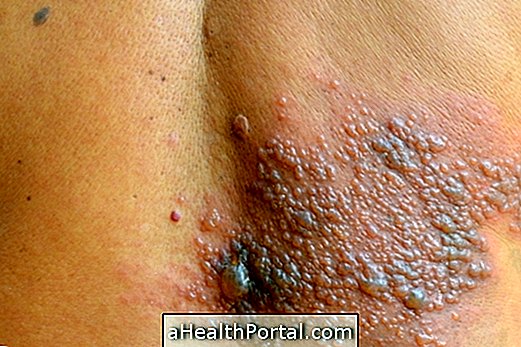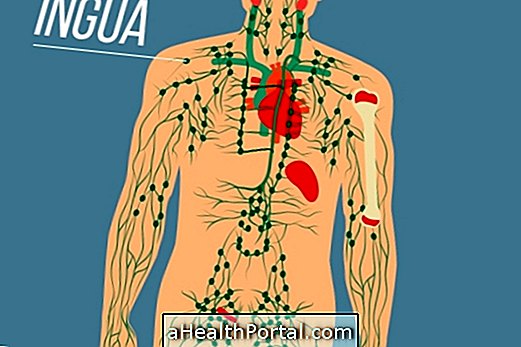Chylothorax arises when there is accumulation of lymph between the layers lining the lungs, called pleurae. The lymph usually accumulates in this region due to a lesion in the lymphatic vessels of the thorax, which can happen due to causes such as trauma, tumor, infection or due to a congenital alteration in the anatomy of the newborn.
Chylothorax can cause signs and symptoms such as shortness of breath, chest pain or cough, and the treatment is done by the pulmonologist or thoracic surgeon, and may include fasting or use of medicines to decrease the production of fluid in the lymphatic vessels, as well as drainage of the region's fluid and surgery to correct its cause.
The accumulation of any substance between the pleura is called pleural effusion, and chylothorax is the less common type of this problem, which can also happen by the accumulation of liquids, blood, pus or air, for example. Understand better what a pleural effusion is and how it happens.

What are the causes
Generally, a chylothorax arises due to obstruction or difficulty in the flow of lymph in the lymphatic vessels, as well as lesions in these vessels or congenital malformations of their anatomy. The main causes include:
- Injuries to the chest due to accidents, falls, gun injuries or surgeries;
- Congenital causes, such as atresia of the thoracic duct, congenital fistula of the thoracic duct, deformities in the lymphatic vessels or even by a blow during the delivery of the baby;
- Benign or malignant tumors. Check out how to identify lymphatic cancer;
- Venous thrombosis;
- Infections that affect the lymphatic pathways, such as filariasis, tuberculous lymphadenitis, or lymphangitis. Understand how filariasis happens, an infection also known as elephantiasis;
- Aortic aneurysm;
- Diseases that cause accumulations of tissues such as amyloidosis or sarcoidosis,
Other causes include pancreatitis, cirrhosis of the liver or other syndromes that disrupt blood or lymphatic circulation.
The name chylothorax is derived from the milky aspect that the liquid of the lymphatic vessels have, which is the result of the excess fat present in its composition, since the lymphatic vessels absorb part of the feeding fat in the intestines.
Lymphatic vessels have important functions in the body, ranging from the absorption of excess fluid from body tissues, participation of the immune response and transport of fats. The major and largest vessels of this type are the thoracic duct, located to the left and lymphatic duct located to the right of the thorax. Learn more about how it works and the importance of the lymphatic system.
How is the treatment done?
The treatment of chylothorax is indicated by the pulmonologist and includes ways to decrease the production of fluids in the lymphatic vessels, such as through a diet low in fat, fasting, feeding only through catheters in the veins or using drugs such as Somatostatin or Octreotide, which act decreasing digestive secretions.
Chemotherapy or radiation therapy may be indicated to treat lumps or lumps that are blocking the flow of lymphatic vessels. Surgery performed with fluid drainage or with corrections of changes in the lymphatic ducts may be necessary in cases in which the clinical treatment was not enough.
How to identify
Symptoms that may arise due to a pneumothorax include:
- Shortness of breath;
- Chest pain;
- Accelerated breathing;
- Cough;
- Accelerated heart rate;
- Blood pressure drop.
A chest X-ray may show the area of fluid accumulation, however, chylothorax is only confirmed after a sample of this liquid has been drained in a medical procedure called thoracentesis, which shows a liquid with a milky appearance and that will be analyzed in the laboratory .
Other tests that may be performed to help with the diagnosis include chest ultrasound, MRI, or thoracic duct lymphography, for example, that help locate the lesion and differentiate it from other causes.

























